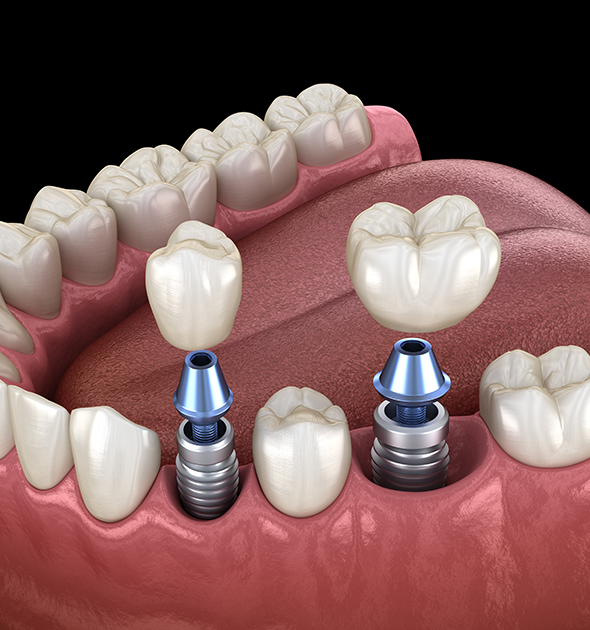1084 Main Street Holden, MA 01520
Dental Implants Restorations

How To Prevent And Resolve Dental Implant Problems
Dental implant issues are extremely rare. At Khanani Family Dental, we highly recommend implants because of their impressive success rate, which can be as high as 99% depending on the dentist.
In the unlikely event of a problem, the implant may become loose, or the crown (the tooth part) may crack or detach. If any issues arise, we are equipped to address and repair the problem quickly and efficiently, ensuring your implant remains functional and secure.
Why Dental Implants Can Become Loose
A dental implant may become loose if the process of osseointegration has not fully occurred. Osseointegration is the process where the titanium implant fuses with the jawbone. Over several months, bone gradually forms around the implant, securing it as firmly as a natural tooth root. If this process is incomplete, the implant may become loose.
Another factor that can affect the stability of your implant is the condition of your jawbone. For your implant to remain secure, the bone needs to stay dense and strong. Conditions like gum disease or infections can weaken the bone, potentially causing the implant to loosen or fail.
If you notice signs of gum disease, such as red, swollen, or bleeding gums, it’s important to contact our dental office promptly. Similarly, if you experience a toothache or discomfort, seeking treatment as soon as possible can help prevent infections that could harm your jawbone and impact your implant’s stability.
What Should I Do If My Dental Implant Becomes Loose?
What Does Dental Implant Repair Involve?
The process for repairing a dental implant varies depending on which part of the implant is affected. If the dental crown (the tooth portion) is cracked or damaged, we may be able to replace just the crown without addressing the titanium post (implant). If the crown has fallen off, bring it with you for an evaluation. In many cases, we can fix minor cracks or chips without needing to remove the entire crown. This approach is the least invasive and allows for a quick restoration. If a new crown is required, our dental lab will create a custom one that we will carefully attach to the implant’s abutment.
However, if the titanium implant itself has failed, the repair process becomes more complex and may involve several steps. The first step is the removal of the failed implant, which may require a surgical procedure. If your jawbone has suffered any deterioration, a bone graft may be needed to restore its density before placing a new implant. Once the graft has healed, we can proceed with placing a new implant, essentially starting the procedure from the beginning. If this is the case, we’ll discuss all available options and help guide you through the process.